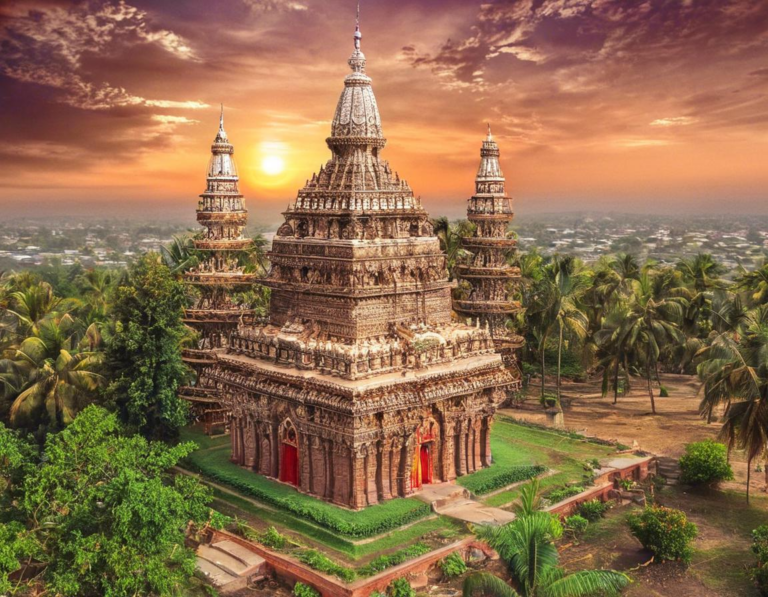Bali, the “Island of Gods,” is renowned for its breathtaking landscapes, vibrant culture, and rich spiritual heritage. Beyond the picturesque beaches and bustling markets lies a world of sacred sites and spiritual practices that draw visitors from around the globe. This article will guide you through the best wisata religi di Bali, exploring iconic Pura and other places of worship that offer a glimpse into the island’s unique religious tapestry.
The Essence of Balinese Hinduism

Before delving into specific wisata religi di Bali, it’s essential to understand the island’s unique blend of Hinduism. Balinese Hinduism, known as “Agama Hindu Dharma,” is a fascinating fusion of ancient Vedic traditions, local beliefs, and animistic practices. This vibrant faith permeates every aspect of Balinese life, from daily rituals to artistic expressions.
Key Concepts in Balinese Hinduism
- Tri Hita Karana: This fundamental concept emphasizes the interconnectedness of humans, nature, and the divine. It encourages harmonious relationships with all living beings and the environment.
- The Three Worlds: Balinese Hinduism envisions three realms: “Bhurloka” (earth), “Bhuvarloka” (atmosphere), and “Svarloka” (heaven). Each realm plays a significant role in the cosmic order.
- Deities and Spirits: Balinese Hinduism recognizes a vast pantheon of deities, each with specific roles and attributes. These deities reside in temples and sacred places, and they are invoked for protection, prosperity, and guidance.
Exploring the Magnificent Pura (Temples)

Pura are the heart and soul of Balinese religious life. These ornate structures serve as focal points for worship, rituals, and community gatherings. The island is home to countless Pura, each unique in its architecture, history, and significance.
Pura Ulun Danu Bratan: The Temple on the Lake
Nestled amidst the serene beauty of Lake Bratan, Pura Ulun Danu Bratan is one of Bali’s most iconic wisata religi. The temple complex, seemingly floating on the water’s surface, is dedicated to the goddess Dewi Danu, who is believed to embody the lake’s spiritual power.
Exploring the Temple:
- Meru: The towering Meru, representing Mount Meru, the mythical center of the universe, is the centerpiece of the complex.
- Pura Penataran: This structure houses sacred relics and serves as a place for offerings and ceremonies.
- Pura Teratai: This pavilion, shaped like a lotus flower, is believed to be a gateway to the divine.
Pura Tanah Lot: The Temple on the Rocks
Pura Tanah Lot, perched precariously on a rock formation jutting out into the ocean, is another must-see wisata religi di Bali. The temple, dedicated to the sea gods, is particularly spectacular at sunset when the golden light bathes the scene in a magical glow.
Exploring the Temple:
- The Temple Complex: Explore the intricate carvings and statues that adorn the temple walls, reflecting the rich cultural heritage of Bali.
- Sea God Worship: The temple is a significant site for rituals dedicated to the sea gods, seeking protection for fishermen and travelers.
Beyond the Pura: Other Places of Worship

While Pura are the most prominent wisata religi di Bali, the island also boasts other places of worship that offer a glimpse into the diverse religious landscape.
Pura Tirta Empul: The Holy Water Temple
Pura Tirta Empul is a sacred temple known for its holy water springs, believed to possess healing and purifying properties. Visitors immerse themselves in the spring water to cleanse their bodies and spirits.
Exploring the Temple:
- The Holy Springs: The temple features a series of pools filled with spring water, each dedicated to a specific deity.
- The Purification Ritual: Participants cleanse themselves with the holy water, seeking blessings and spiritual renewal.
The Churches of Bali
Bali also has a growing Christian community, with numerous churches scattered across the island. From traditional Catholic cathedrals to modern evangelical churches, these places of worship reflect the diversity of religious beliefs in Bali.
Mosques in Bali
The Muslim community in Bali, though smaller than the Hindu population, plays a vital role in the island’s social fabric. Mosques, such as the Baitul Makmur Mosque in Denpasar, provide a space for Muslims to practice their faith and connect with their community.
Experiencing Balinese Spirituality

Visiting wisata religi di Bali offers a unique opportunity to engage with the island’s spiritual heart. Here are some tips for making the most of your experience:
Respect for Traditions
- Dress Appropriately: When visiting temples, dress modestly, covering your shoulders and knees.
- Offering Respect: Offer a small donation or offering upon entering temples, as a gesture of respect to the deities.
- Avoid Loud Behavior: Maintain a respectful and peaceful demeanor within the temple grounds.
Participate in Rituals
- Witnessing Offerings: Observe the daily rituals of offering flowers, incense, and food to the deities.
- Ceremonies and Festivals: If you happen to be in Bali during a religious festival, take the opportunity to witness the vibrant processions and ceremonies.
Connecting with Local Culture
- Engage with Locals: Talk to Balinese people about their beliefs and traditions.
- Explore Local Markets: Discover the unique offerings of traditional Balinese handicrafts and spiritual items.
Conclusion
Wisata religi di Bali offers an enriching and unforgettable journey into the heart of the island’s spiritual heritage. From majestic Pura to other places of worship, each site reveals the depth and beauty of Balinese Hinduism and the island’s diverse religious tapestry. By understanding the beliefs and traditions, respecting the sacred spaces, and engaging with local culture, you can gain a profound appreciation for the spiritual essence of Bali.




